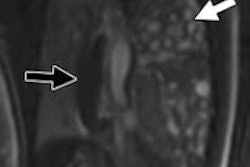With the help of MRI, researchers have found that fetuses with enlarged ventricles in the brain are less likely to benefit from surgery in the womb to treat spina bifida, according to a study published online September 15 in the Journal of Neurosurgery: Pediatrics.
In these cases, it may be best to wait until after birth to perform the corrective shunt placement, according to the group led by Dr. Noel Tulipan from Vanderbilt University Medical Center.
In the study, 91 women were randomly assigned to a prenatal surgery group and 92 women to a postnatal group. Upon enrollment, the researchers obtained MRI scans of the brains of the fetuses in both groups.
Among all of the mothers, children with the largest ventricles were more likely to require a shunt than those with smaller ventricles. For the prenatal surgery group, shunts were eventually placed in 20% of children with ventricles smaller than 10 mm, 45% with ventricles from 10 mm to less than 15 mm, and 79% with ventricle size of 15 mm or larger. In the postnatal surgery group, shunts were placed in 79%, 86%, and 88%, respectively.
The researchers concluded that fetuses with ventricles smaller than 10 mm are the ideal candidates for fetal surgery, while there appeared to be no benefit to shunting for fetuses with ventricles 15 mm or larger. Those with sizes in between should be carefully evaluated regarding surgery, the group noted.
The study was supported by the U.S. National Institutes of Health (NIH) with data from NIH's Management of Myelomeningocele Study (MOMS).


.fFmgij6Hin.png?auto=compress%2Cformat&fit=crop&h=100&q=70&w=100)





.fFmgij6Hin.png?auto=compress%2Cformat&fit=crop&h=167&q=70&w=250)











